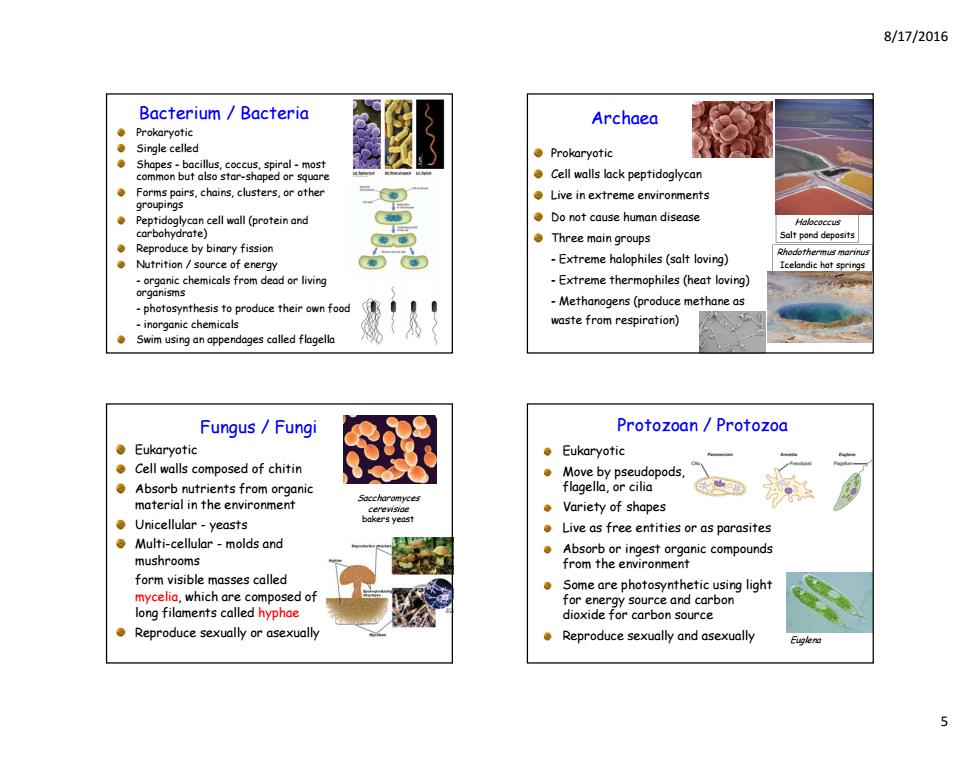正在加载图片...

8/17/2016 Bacterium Bacteria Archaea ●Prokaryotic Single celled ●Prokaryotic Shapes-bacillus,coccus,spiral-most common but also star-shaped or square Cell walls lack peptidoglycan Live in extreme environments Peptidoglycan cell wall(protein and Do not cause human disease carbohydrate) ●Three main groups Sclt pond depasits Reproduce by binary fission Nutrition/source of energy -Extreme halophiles(salt loving) the Icelandic hot sprin -organic chemicals from dead or living -Extreme thermophiles(heat loving) organisms photosynthesis to produce their own food -Methanogens(produce methane as -inorganic chemicals waste from respiration) ● Swim using an appendages called flagella Fungus/Fungi Protozoan Protozoa ●Eukaryotic ●Eukaryotic Cell walls composed of chitin 。Move,by pseudopods, Absorb nutrients from organic flagella,or cilia material in the environment ●Variety of shapes ●Unicellular-yeasts Live as free entities or as parasites Multi-cellular-molds and Absorb or ingest organic compounds mushrooms from the environment form visible masses called Some are photosynthetic using light mycelia,which are composed of for energy source and carbon long filaments called hyphae dioxide for carbon source Reproduce sexually or asexually Reproduce sexually and asexually e 8/17/2016 5 Bacterium / Bacteria Prokaryotic Single celled Shapes - bacillus, coccus, spiral - most common but also star-shaped or square Forms pairs, chains, clusters, or other groupings Peptidoglycan cell wall (protein and carbohydrate) Reproduce by binary fission Nutrition / source of energy - organic chemicals from dead or living organisms - photosynthesis to produce their own food - inorganic chemicals Swim using an appendages called flagella Archaea Prokaryotic Cell walls lack peptidoglycan Live in extreme environments Do not cause human disease Three main groups - Extreme halophiles (salt loving) - Extreme thermophiles (heat loving) - Methanogens (produce methane as waste from respiration) Halococcus Salt pond deposits Rhodothermus marinus Icelandic hot springs Eukaryotic Cell walls composed of chitin Absorb nutrients from organic material in the environment Unicellular - yeasts Multi-cellular - molds and mushrooms form visible masses called mycelia, which are composed of long filaments called hyphae Reproduce sexually or asexually Fungus / Fungi Saccharomyces cerevisiae bakers yeast Protozoan / Protozoa Eukaryotic Move by pseudopods, flagella, or cilia Variety of shapes Live as free entities or as parasites Absorb or ingest organic compounds from the environment Some are photosynthetic using light for energy source and carbon dioxide for carbon source Reproduce sexually and asexually Euglena